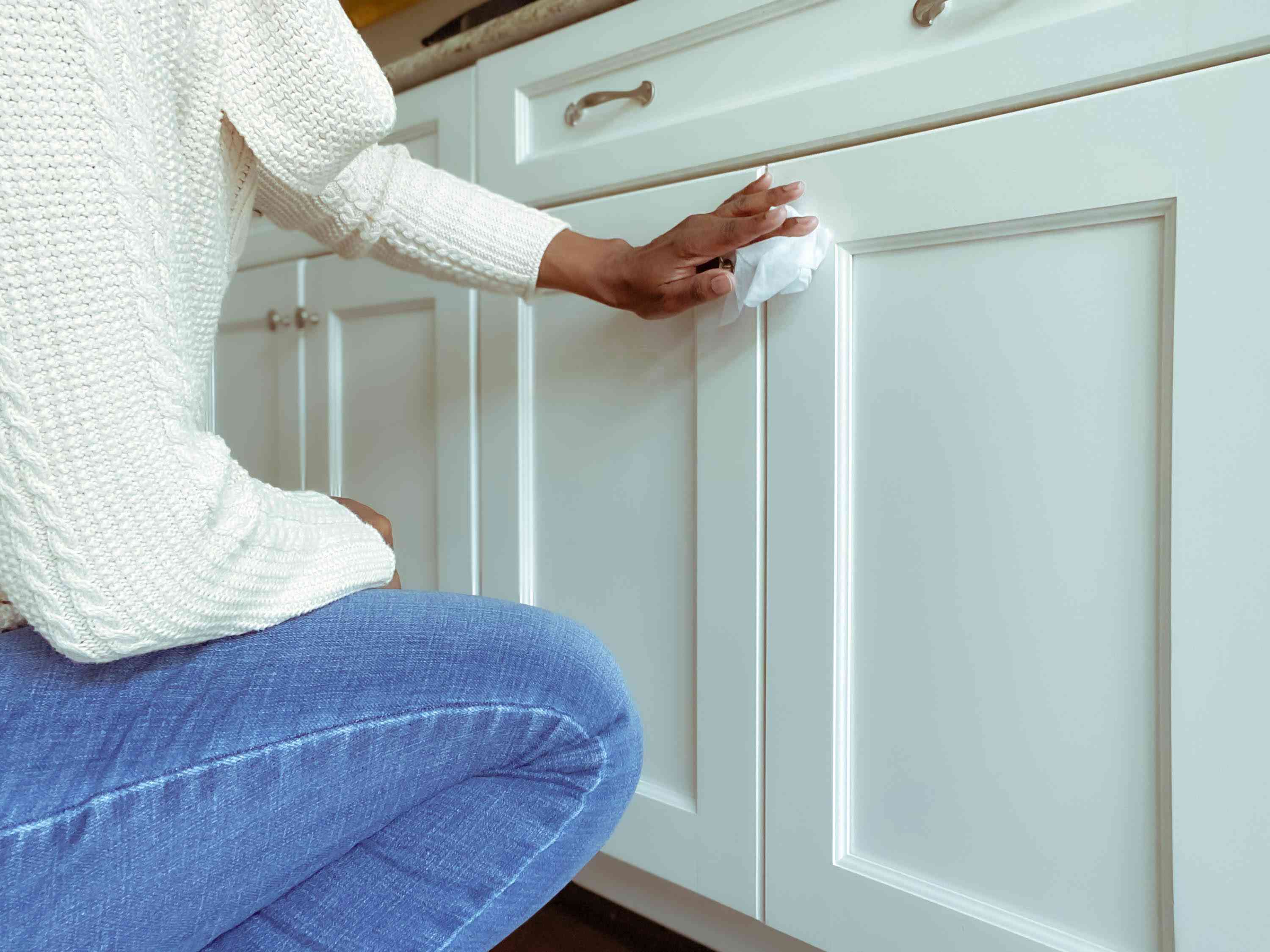
Depending on the color of your cabinets , you might not notice inevitable grease buildup until you feel the sticky residue. Regardless of whether or not you can see the unsightly stains, it's always a great idea to give your kitchen cabinets a wipe down every now and then. In this guide, we're dishing out (pun intended) the best methods for tackling grease stains for clean, beautiful cabinets.
Before You Begin
There are a few pre-degreasing measures you need to take before you begin cleaning your cabinets . The first is to ensure you have proper ventilation in the room if you're using store-bought degreasers with chemicals in them. While you're at it, you should also put on a pair of safety gloves to protect your hands from coming into contact with any harsh cleaners.
Apart from taking care of yourself, you also need to take care of your cabinets. Before you start heavily cleaning with any of our methods, test it out on a small, inconspicuous area to ensure you aren't going to damage your cabinets. You should also avoid smearing on excessive amounts of water to wooden cabinets to prevent warping from occurring.
What You'll Need
The exact tools and materials you'll need will vary depending on the cleaning method you choose. But, overall, here are the items you will need to have on hand for tackling grease on cabinets.
- Dish soap and warm water
- Baking soda
- White vinegar
- Lemon juice
- Commercial degreaser (optional)
- Microfiber cloths or sponges
- Soft-bristle brush
- Spray bottle
- Dry towel
Method 1: Dish Soap & Warm Water
For lighter grease stains, dish soap and warm water tends to do the trick. Here are the steps you'll need to follow:
- Mix together a few drops of dish soap to a bowl of warm water.
- Dip your cloth in the water mixture and lightly wipe at the stain, going against the grain if your cabinets are made from wood.
- Wipe the area dry with a clean towel.
Method 2: Vinegar & Water Solution
Vinegar is a beloved household cleaner for a reason. It's a powerful cleaning tool you can use to tackle grease stains naturally following these steps:
- Mix equal parts warm water and vinegar in a small spray bottle.
- Spray a small amount of the solution onto the grease stains.
- Let the solution sit for a couple of minutes
- Wipe clean with a damp cloth. If stains persist, try scrubbing gently with a soft bristled brush.
Method 3: Baking Soda Paste
For those tough, stuck-on grease stains, baking soda paste will be your first go-to. Here's how to use this method.
- Mix together a paste consisting of two parts baking soda and one part water.
- Apply the paste to grease stains and let the paste sit for a couple of minutes.
- Use a soft cloth to wipe away the stain.
Method 4: Commercial Degreasers
Of course, you can never go wrong with using commercial degreasers to remove the stains if the other methods aren't solving the problem. The key for using this method safely and properly is to choose a product that won't damage the material of your cabinets, and to test a small amount first before using it on larger areas.
We recommend the following commercial degreasers for tackling your kitchen cabinets:
- Simple Green
- Method
- 409
- Easy-Off
Preventative Measures
While there's no way to prevent grease from splattering on your cabinets, there are a few preventative measures you can take to keep your cabinets clean. The first is to stick to a consistent cleaning routine. If you see grease stains after cooking, wipe them up immediately. Or, you can add wiping down your cabinets to your weekly cleaning chore list .
It's also recommended to ensure there's proper ventilation in the kitchen while cooking, like from your range hood. This draws grease in the air and prevents it from landing on cabinets or other surfaces in your kitchen.
Lastly, make sure you're putting high-quality finishes on your cabinets to keep them as close to grease-free as possible. Finishes like polyurethane, varnish, or laminate add a protective topcoat to your cabinets to protect them from substances like grease.
Related: The Best Way To Degrease Any Surface In Your Kitchen
Read the original article on Southern Living